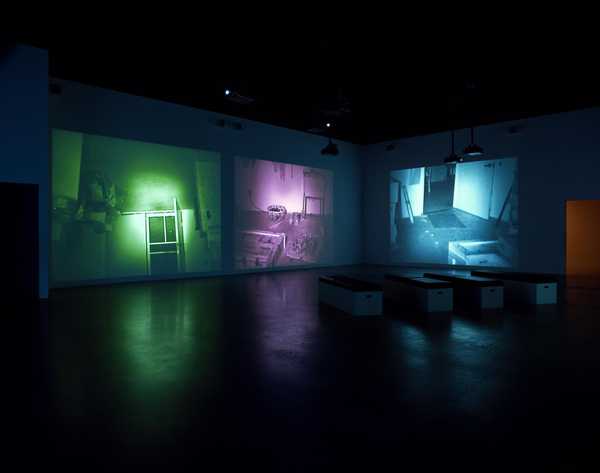Elements of 4D_Marah Westcott
Time
Time is the one thing that separates 4-D Art from the other forms of art. It encompasses the ideas of 2-D and 3-D as well as adding time to the mix. Though, there are many different forms of sound used in 4-D art. An example of this is the running time or run time, which shows the total amount of time that a project has. This is the length of the video or movie. Another form of time is experienced time, which shows the time passing in the film. This can be shown in obvious ways, such as the scene turning dark with the presence of moonlight, or simply be implied as a person's conversation continues. It is up to the artist how they use time in their piece to best show their message.
This piece was called Mapping the Studio II with Color Shift, Flip, Flop & Flip/Flop (Fat Chance John Cage) by Bruce Nauman.
I like this piece. The artist made it by filming one hour of footage each night in his studio. I believe it shows time very well, as you can see the differences between each day shown. Time is very important because it shows the driving point in 4-D projects. This piece shows that well. It shows that even something as mundane as a person's art studio, where they work every day, can change each night.
Sound
Sound is a very important aspect of 4-D art. it shapes our perception of a piece, whether it is in a rational art project or in a YouTube. It helps set the tone and mood for the whole work. Though, the sound alone doesn't make a piece good. You also have to consider the lack of sound (silence), synchronous/nonsynchronous sound, and diegetic/non-diegetic sounds. All of these aspects work together to make the piece work.
Synchronous sound is sound that matches the timing of what is shown. An example would be someone closing a door and the music stopping at the exact same time. Naturally, nonsynchronous is when the music does not match the timing. Though, this is not to be confused with dietetic and non-diegetic sounds. These sounds deal with what is happening in the video. An example of a dietetic sound is hearing a cupboard slam when a cupboard is being slammed. If you heard a cat meow at the cupboard slamming, it would be non-diegetic.




Comments
Post a Comment